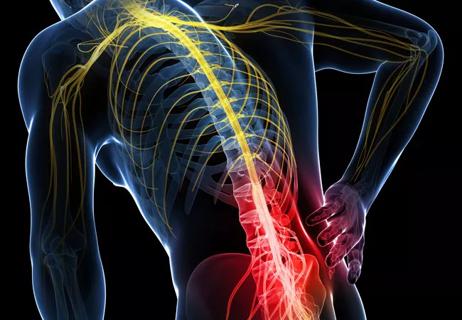It is a lifestyle commitment that can minimize pain and improve lives

One of the more impactful and proactive ways to reduce a patient’s chronic pain is through diet changes. The body cannot perform at its highest level if it isn’t given the proper nutrients to replenish what is needed, and pain can be an expression of the body not functioning properly.
Cleveland Clinic is a non-profit academic medical center. Advertising on our site helps support our mission. We do not endorse non-Cleveland Clinic products or services. Policy
Ellen W. K. Rosenquist, MD, is an assistant professor of anesthesiology at the Cleveland Clinic Lerner College of Medicine at Case Western University. When counseling her chronic pain patients, diet is one of the first topics she brings up.
Because of the long-term nature of helping a patient change his or her diet, Dr. Rosenquist suggests three steps. These include helping patients get started on their weight loss journey, setting achievable goals, and understanding the nutrients they need.
“Many patients come in to a doctor’s office and expect a fix or instant progress,” says Dr. Rosenquist. “I tell my patients ‘you’re not going to lose 100 pounds in a day.’ Chronic pain sometimes takes months and years to develop, and it’s going to take months and years to recover from, even if you’re doing everything right.”
Dr. Rosenquist recommends focusing on wellness, planning and counseling. She believes it is important for patients to visit a nutritionist or to speak with a counselor or psychologist to help develop the mindset of wellness. Some patients who have an unhealthy relationship with food may also be dealing with psychological issues where they’re eating for comfort or to relieve stress. If the reasons for overeating or eating unhealthy food can be identified, those need to be addressed before the patient can have long-term success.
“I believe you need to identify the reasons why a patient is using that coping mechanism and turn it around for healthy purposes,” says Dr. Rosenquist.
Because the process of losing weight can be slow and lengthy, it can be difficult to get patients into the right mindset. Dr. Rosenquist explains that it is important to ensure that patients not only recognize this, but the caregiver should also help them come up with small, achievable goals to help them to not become discouraged.
Improving physical health consists of being mindful of your diet, exercising and working to maintain weight loss, but this can be overwhelming to patients. Dr. Rosenquist tells her patients to pick one goal, although this doesn’t mean they can ignore the other aspects of improving physical health. Patients won’t see results if they’re exercising but still eating unhealthy food or vice versa.
For patients who are in too much pain to exercise, there are ways to begin to make progress. These patients can reduce the amount of food they eat to their suggested basic metabolic caloric intake. This is why Dr. Rosenquist suggests working with a nutritionist who will know how to make the proper recommendations. In regard to exercising, a patient might have trouble getting up and walking around, but they can still do stationary exercises. This could be something like sitting in a chair and turning their arms in circles or marching up and down with their legs off the floor.
“I use these examples and give them real life images to think about, and so they pick small goals,” says Dr. Rosenquist. “If they are willing to pick small goals and willing to work towards those goals, then they will often come back with tangible results such as ‘I lost a few pound!’ or ‘I am able to more things functionally.” To help them stay on track with their progress, Dr. Rosenquist will try to see her newer patients at four- to six- week intervals depending on how complex their needs are.
While it may seem obvious, the most important step towards eating better is to simply start with a balanced and nutritious diet.
“My philosophy is we are omnivores – we are meant to eat everything – but it should really be in moderation and limited to the fundamentals,” says Dr. Rosenquist. “We need animal protein, we need minerals and vitamins, and that comes through our vegetables. But vegetables and fruits are all carbohydrates as well.”
Patients who are vegetarians can still get proteins through beans and other non-animal based proteins in their diet. But it is also important for them to eat leafy greens so that they get the essential minerals and vitamins.
One nutritional plan that has shown success with reducing chronic pain is the anti-inflammatory diet. Although it is not a specific regimen, it favors fruits and vegetables, foods containing omega-3 fatty acids, whole grains, lean protein, healthful fats and spices. Discouraged foods include processed foods, red meat and alcohol. The Mediterranean diet and the Dietary Approaches to Stop Hypertension (DASH) diet are both examples of anti-inflammatory diets.
“That research is ongoing,” says Dr. Rosenquist. “But it has been shown to be very effective in people who have such inflammatory pain like arthritic pain to have a low carb diet can help to reduce inflammatory pain such as arthritic conditions.”
If patients eat a lot of processed food or non-nutrient valued food, their cells cannot rejuvenate and repair from the day’s activities. While diet is an important aspect of lowering weight to reduce pain, it is important to remember that it is just one aspect. The relationship between a patient’s diet, exercise and consistency is symbiotic, and all three play a part in successful weight loss and pain reduction.

Program enhances cooperation between traditional and non-pharmacologic care

Pain specialists can play a role in identifying surgical candidates

Clinical judgment is foundational to appropriately prescribing

The device is a less invasive alternative for patients who are struggle with chronic pain

The Four Pillar Project provides physicians with evidence-based talking points to quickly identify problem areas and educate patients to optimize important aspects of their health.

When conservative approaches don’t work, it may be time to turn to sacroplasty

Fourth iteration of the guidelines focuses on high-risk patient identification and evidence on newer drugs

Newer procedure is proving successful for certain patients